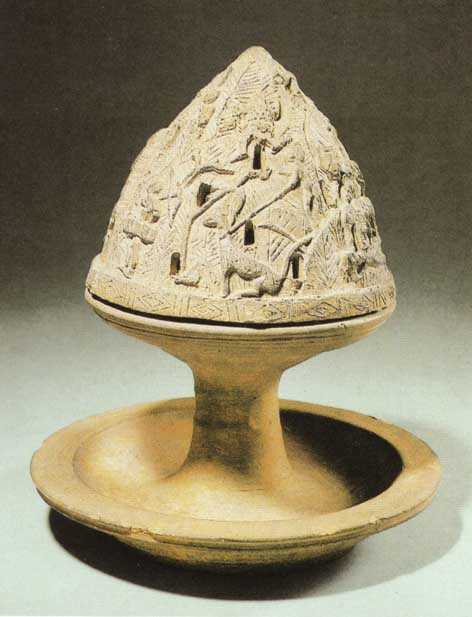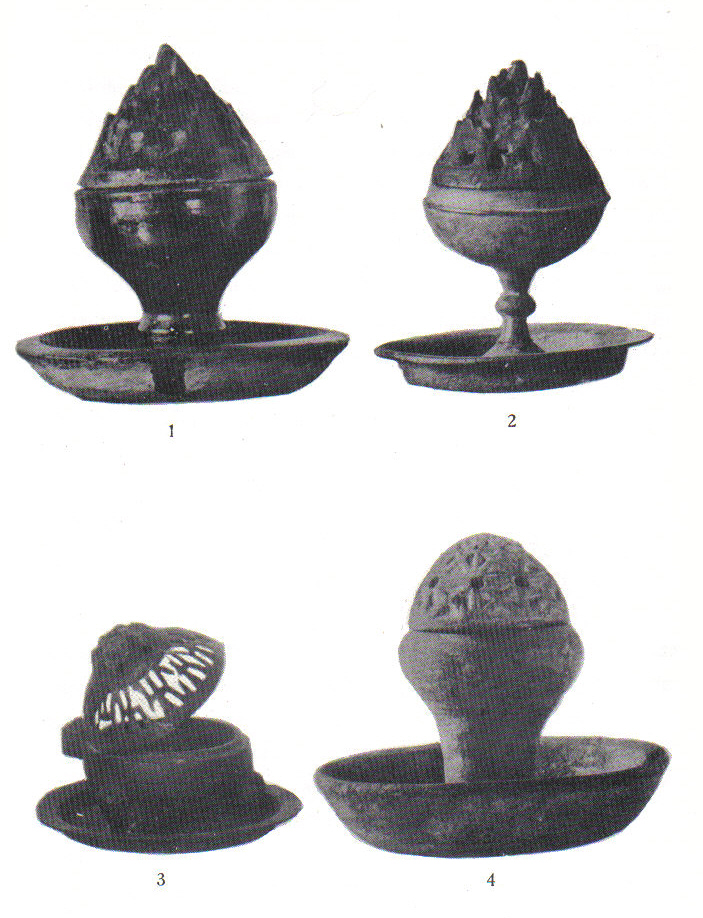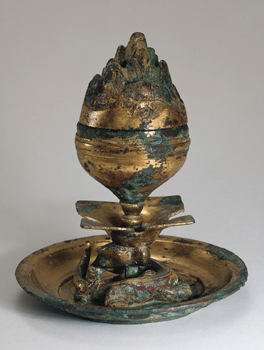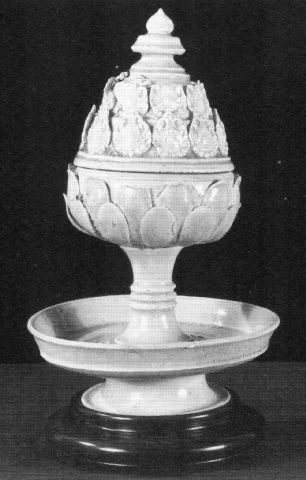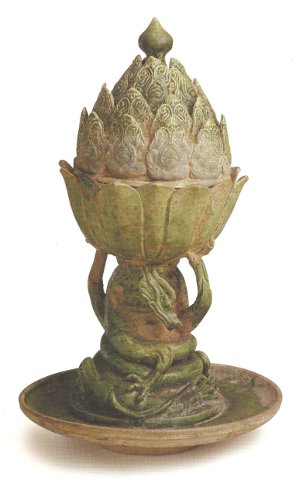Four Han Dynasty Hill-Censers.
Fig. 1, pottery, 17.4 cm H. The cover is 6.8 cm H moulded into a hill
encompassed by a double row of waves. The upper part is perforated by four holes
arranged in a square. The bowl is 4.5 cm deep with a 6.5 cm diameter mouth.
The dish measures 51.8 cm in circumference. The outlines of the bowl gradually merge
into the low foot. Cover, bowl, and dish are coated with a deep, brilliant
dark-green glaze in an excellent state of preservation, and veined with a network of fine crackles.
Fig. 2, bronze, 16.5 cm H. The cover is 6 cm H worked into the motive "hill surrounded by water,"
with twelve perforations along the lower margin, and seven in the upper part. The four upper ones
are displayed in the same way -- in the form of a square -- as in Fig. 1. The stem of the bowl
is riveted to the 13 cm diameter dish below. Its slender standard is set off distinctly from the bowl.
Fig. 3, bronze, 9.5 cm H. The lid is fastened to the bowl by means of a hinge. Its
outer zone appears in open-work of extremely thin metal, characteristic of the Han period.
Only the raised part on the top is worked up into high relief, forming one central hill surrounded
by siz waves, which, in their turn, are encircled by another outer row of six larger waves.
Between the waves of this row are six round perforations. The bowl rests on three short feet
riveted to the 13.5 cm circumference dish below. The whole object is covered with a dark-green patina.
Fig. 4, pottery, 17.5 cm H. The loose cover is dome-shaped and has two circular rows of eight
perforations each. The decoration consists of an eight-pointed, star-shaped figure in the center on
the top, around which run two circular rows of squares with their diagonals. The perforations
are in the angles of these squares. The bulging bowl rests on a high stem fixed in a deep
circular bowl. The glaze, only partially preserved, is a very light green, and the surface
has a brilliant silvery gloss.
(Source: Laufer, Berthold
Chinese Pottery of the Han Dynasty
(Leiden: E.J. Brill, Ltd., 1909;
1962 reprint by Charles E. Tuttle Co., Inc.), PLATE LV, pg. 183, with descriptions pp. 183-187.
|
